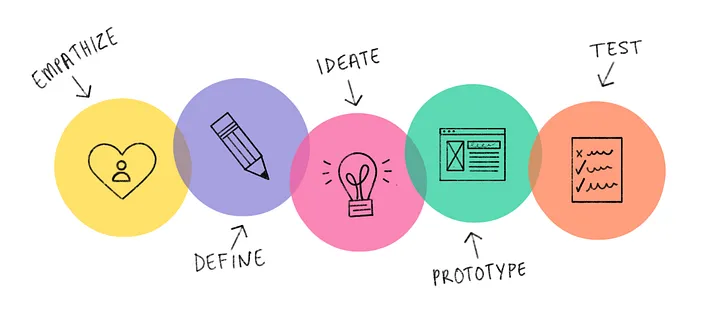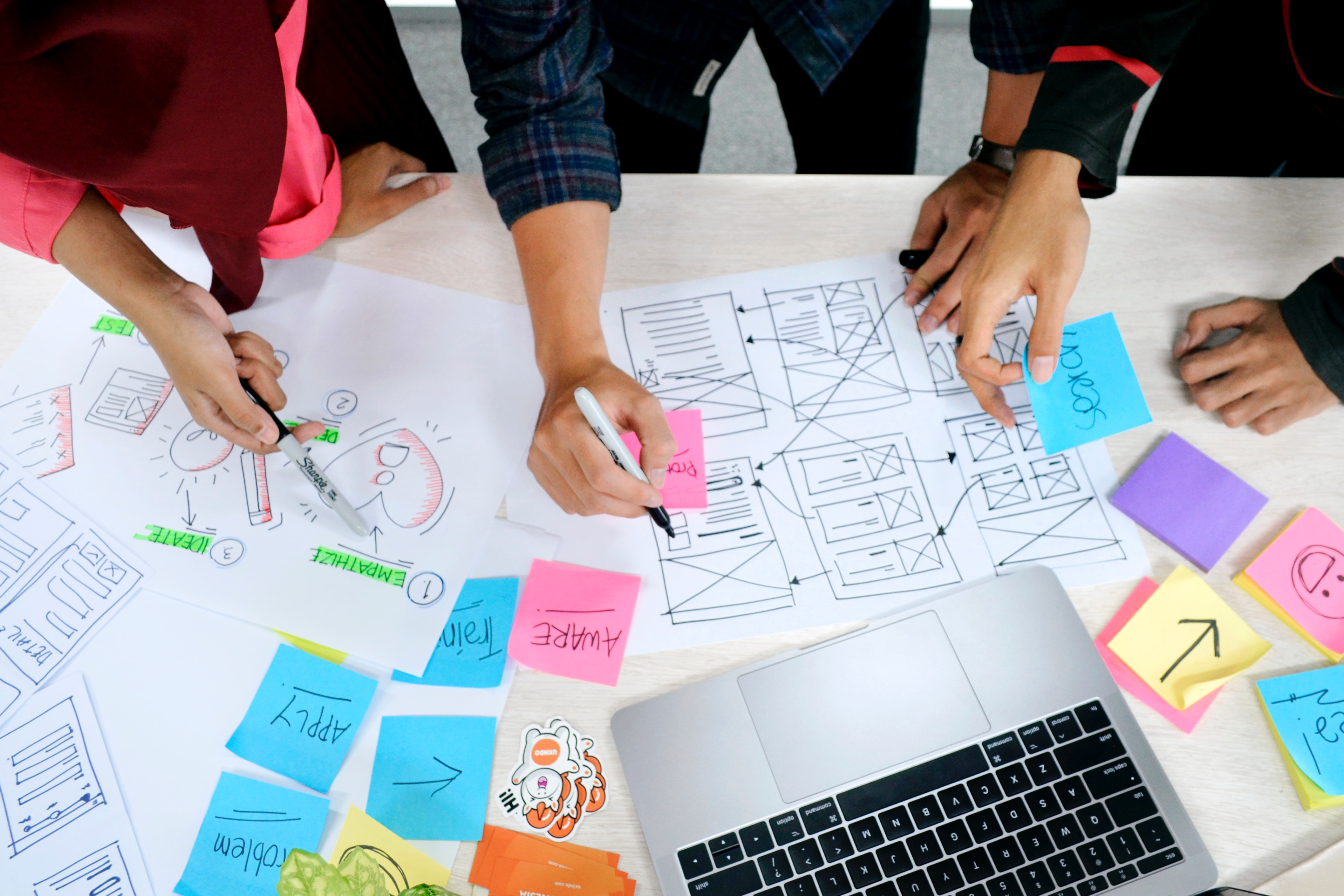The Importance of Design Thinking in Creating Better User Experiences
 Okoi Praise
Okoi Praise
Designers are problem solvers. Constantly tasked with the work of creating intuitive solutions to users' problems to ensure they have a seamless experience.
This could be overwhelming since the designer has to sort through different kinds of user problems from complex to less complex ones and come up with innovative solutions. This is where design thinking comes in.
What is design thinking?
Design thinking is a combination of an ideology and a set of tools that helps to solve problems creatively. The design thinking process functions in 5 steps that bring this ideology to life starting with building empathy for the user through to coming up with ideas that can be transformed into functional, testable products.
The design thinking process

Step 1: Empathize
Through user research, valuable insight is obtained into the needs of the users and empathy is built. Empathy puts aside the designer's assumptions and helps him/her focus solely on the needs of the user and what solutions can sufficiently address those needs.
Step 2: Define
Here, information obtained from the empathy stage is analyzed to get a clearly defined problem statement. This helps to keep the designer centered on what problem he is solving throughout the design process.
Step 3: Ideate
Fully armed with relevant information from the first two stages, ideas and potential solutions can now be generated. An ideation technique that can be used is brainstorming and it is important for the designer to note all ideas that come to mind or are shared by the team, you never know which one might click!
Step 4: Prototype
This stage involves taking the narrowed-down ideas generated and creating a low-fidelity version of what the final product will look like, called a prototype. It is an experimental phase and this prototype will be placed in the hands of users for testing. The aim is to identify the best possible solution to solve the user's needs. Prototypes could be done on paper or digital spaces.
Step 5: Testing
The prototypes are placed in the hands of real users for thorough testing and the feedback gotten from this stage is very important as it is poured back into the design thinking process to redefine and improve the solutions and make iterations, and adjustments.
It is important to note that the design thinking process could be non-linear. Each step does not necessarily have to follow each other sequentially so it’s important to go with the creative problem-solving flow but ensure to stay within the confines of the system.
Three major importance of the design thinking process
It helps in creating user-centered design.
It all begins with the users. From the beginning of the design process, the designers are made to see things through the eyes of the user and empathize with their needs first before considering or creating solutions to solve the user's problems and not the other way around. The design thinking process keeps the designer grounded and focused on the users from the beginning of the design project to the end thereby making the designer better at designing user-centered designs, and better user experiences.
It encourages teamwork and collaboration.
The design thinking process encourages teamwork and collaboration by fostering an environment where diverse perspectives of teams and their skills are actively engaged throughout the design project. This again highlights the first stage of the design thinking process – empathy. Through collaborative user research, team members gather a wealth of insights, creating a shared understanding of the needs of the users.
This empathy-driven approach naturally brings team members together.
It promotes constant iteration which helps designers to come up with better solutions.
Design thinking promotes constant iterations which involves rapid prototyping and ideating based on users' feedback from testing or the use of the product. This feedback helps designers improve their ideas by better understanding the user's needs, learning from failures, correcting errors and continuous improvement of solutions throughout the design process ultimately leading to better solutions. This not only leads to more innovative solutions for the users and business stakeholders but also makes them better designers.
Subscribe to my newsletter
Read articles from Okoi Praise directly inside your inbox. Subscribe to the newsletter, and don't miss out.
Written by

